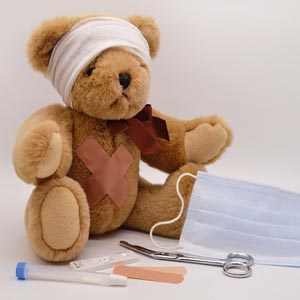Pediatrics ear syringing in a tertiary health institution of a developing country: Our experience

Accepted: 6 December 2021
All claims expressed in this article are solely those of the authors and do not necessarily represent those of their affiliated organizations, or those of the publisher, the editors and the reviewers. Any product that may be evaluated in this article or claim that may be made by its manufacturer is not guaranteed or endorsed by the publisher.
Authors
Ear syringing is a common otologic procedure in otorhinolaryngologic practice worldwide. This study aimed at determining the prevalence, indications, contraindications, complications and sources of referral that are associated with ear syringing among children in a tertiary health institution of a developing country. This was a retrospective study of all patients that had ear syringing in the Ear, Nose and Throat department of our center over two years. Data was analyzed using SPSS version 18.0. Statistical significance was set at pvalue ≤0.05. There were 176 (59.9%) male participants with a male to female ratio of 1.5:1. The prevalence of ear syringing in children less than 18 years was 9.1%. Main indications for ear syringing were impacted earwax 173 (58.8%), impacted foreign body in the ear 62 (21.1%), fungal debris 41 (13.9%) and dried pus debris (post otitis externa) 15 (5.1%). Unilateral ear syringing 227 (77.2%) was more common than bilateral ear syringing 67 (22.8%), with the right ear syringing done in138 (46.9%). The majority 201 (68.4%) of the earsyringing was done by specialist ENT nurses and 86 (29.3%) by resident doctors. Two hundred and nineteen (74.5%) were performed in outpatient clinics while 67 (22.8%) were in the emergency ward. Relative contra-indications to ear syringing occurred in 184 (62.9%). Some of the contraindications were hard impacted earwax and acute otitis externa in 132 (44.9%) and 42 (14.3%) respectively. Complications occurred in 63 (21.4%) and these were failed procedures in 26 (8.8%), otalgia in 9 (3.1%), and irritating cough 9 (3.1%). The main sources of referral were Family physicians in 82 (27.9%) and Paediatricians in 76 (25.9%). Prevalence of pediatric ear syringing was 9.1%. Common indications are preventable diseases. The procedure appears very simple, but it is associated with some complications.
How to Cite
PAGEPress has chosen to apply the Creative Commons Attribution NonCommercial 4.0 International License (CC BY-NC 4.0) to all manuscripts to be published.

 https://doi.org/10.4081/pjm.2022.161
https://doi.org/10.4081/pjm.2022.161



